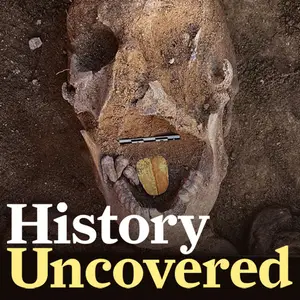The cemetery, located on the grounds of Fonmon Castle in the south of Wales, paints a perplexing picture of medieval burial rites.

Cardiff UniversityResearchers found about 80 graves at the cemetery that date to the sixth and seventh centuries.
When archaeologists descended on the grounds of Wales’ Fonmon Castle, they expected to find evidence of a prehistoric settlement. Instead, in a “big surprise,” they uncovered a cemetery from the early Middle Ages rife with dozens of graves, bodies laid to rest in peculiar positions, and fascinating evidence of graveside feasting rituals.
“This is a really exciting discovery,” Andy Seaman, a specialist in early medieval archaeology from Cardiff University who is leading the excavation, said in a press release. “The Fonmon cemetery will allow us to discover so much about the people who lived here around 1,400 years ago.”
The archaeologists uncovered about 80 bodies that they believe date from the sixth and seventh centuries. Curiously, some of these remains were found in “crouched” positions instead of being laid flat on their backs.

“In cemeteries of this period, most bodies are placed on their backs, head to the west and feet to the east,” Seaman explained to Newsweek.
He continued: “But nearly a quarter of our burials are in a tightly ‘crouched’ position. This is seen at other sites, but not usually in this concentration. One of our key aims is to understand what this means and how it might relate to the identities of these individuals.”

Andy SeamanOne of the “crouched” bodies found on the grounds of Fonmon Castle.
Archaeologists also found that the teeth of some of the skeletons were “very worn in a kind of a funny way,” suggesting that people used their teeth “as tools,” according to University of Reading osteoarchaeologist Summer Courts. She told the BBC that some of the people buried on the castle grounds may have regularly used their teeth “for textile work, leather work, or basketry — they’re pulling something through their front teeth.”
Adding to the mystery of the cemetery are discoveries that the archaeologists made around the graves, which suggest that local people engaged in hearty graveside feasting rituals.
Amid the dozens of human skeletons, archaeologists also found animal bones that showed evidence of butchery and cooking, rare pieces of glass drinking vessels that may have originated in France or North Africa, and even a tiny carved peg that might have been a piece in a board game similar to cribbage.
Because there’s no evidence of settlements near the cemetery, it appears that people once flocked to the site for ritual feasting and game-playing.
“We tend to think of graveyards as sort of enclosed spaces that we don’t really go to, but they probably would have been quite central to life in the past,” Seaman remarked to the BBC. “And it’s not just a place for people being buried, but it’s a place where communities are coming together: They are burying their dead, but they’re also undertaking other forms of activity, and social practice, including eating and drinking — and feasting.”
As Seaman told Newsweek, the cemetery is remarkable for another reason as well. It’s a rare discovery from a crucial but not well understood period of British history.

Andy SeamanArchaeologists discovering a skeleton at Fonmon Castle during their initial excavations.
“This was the time following the end of Roman administration, during which major social, political, and economic changes took place, including the rise of the Christian Church, the development of kingship, and new forms of social and ethnic identity,” Seaman explained.
He added: “However, it is very poorly documented, particularly in the west of Britain where we have few historical records and archaeological sites are difficult to identify — and usually do not display good preservation of artifacts.”
The researchers plan to continue to investigate the site to see when exactly it was used. And DNA testing will also likely shed light on the people buried there. But questions still remain. How did medieval people interact with the cemetery? Why were some people buried in “crouched” positions? Where did the glass objects come from?
“The evidence we’ve got here is that the people have access to very high quality imported goods, that you can only get through trading or exchange networks, with people with a lot of wealth, to bring it here,” Tudur Davies of Cardiff University noted to the BBC. “What exactly is going on? Who are these people being buried here?”
After reading about the mysterious medieval cemetery discovered in Wales, look through these surprisingly raunchy illustrations from medieval manuscripts. Or learn something new with these fascinating facts about life during the Middle Ages.





